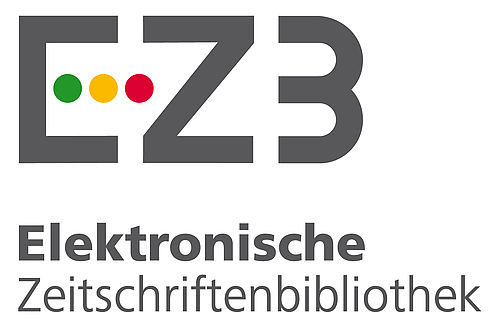Abstract
References
- 1. Infusino, F. et al. 2020. Diet supplementation, probiotics, and nutraceuticals in SARS-CoV-2 infection: a scoping review. Nutrients 12(6), 1-21. https://doi.org/10.1002/jmv.25681
- 2. Chen, Y.L. & Guo, D. 2020. Emerging coronaviruses: Genome structure, replication, parthenogenesis. Journal of Virology, 92(418423), 418-423. https://doi.org/10.1002/jmv.25681
- 3. Chilvers, M., et al. 2001. The effects of coronavirus on human nasal ciliated respiratory epithelium. European Respiratory Journal 18(6), 965-970. DOI: 10.1183/09031936.01.00093001 4. Wang, Z., Chen, X., Lu, Y., Chen, F. & Zhang, W. 2020. Clinical characteristics and therapeutic procedure for four cases with 2019 novel coronavirus pneumonia receiving combined Chinese and Western medicine treatment. Bioscience trends. 14(2020), 64-68 https://doi.org/10.5582/bst.2020.01030
- 5. Hunter, P.R. & Brainard, J.S. 2021. Estimating the effectiveness of the Pfizer COVID-19 BNT162b2 vaccine after a single dose. A reanalysis of a study of'real-world'vaccination outcomes from Israel. Medrxiv doi: https://doi.org/10.1101/2021.02.01.21250957
- 6. Chagla, Z. 2021. The BNT162b2 (BioNTech/Pfizer) vaccine had 95% efficacy against COVID-19≥ 7 days after the 2nd dose. Journal of Internal Medicine, 174(2), JC15. https://doi.org/10.7326/ACPJ202102160-015
- 7. Wise, J. Covid-19: New coronavirus variant is identified in UK. British Medical Journal Publishing Group; 2020. https://doi.org/10.1136/bmj.m4857
- 8. Azam, M.N.K, Al Mahamud R., Hasan, A., Jahan. R., & Rahmatullah, M. 2020. Some home remedies used for treatment of COVID-19 in Bangladesh. 8(4), 27-32.
- 9. Astuti, I.J.D. 2020. Severe Acute Respiratory Syndrome Coronavirus 2 (SARS-CoV-2): An overview of viral structure and host response. Journal of Diabetes, 14(4), 407-412. https://doi.org/10.1016/j.dsx.2020.04.020
- 10. Lu, R., et al. 2020. Genomic characterisation and epidemiology of 2019 novel coronavirus: implications for virus origins and receptor binding. 395(10224), 565-574. https://doi.org/10.1016/S0140-6736(20)30251-8
- 11. Satarker, S. & Nampoothiri, M. 2020. Structural proteins in severe acute respiratory syndrome coronavirus-2. Journal of Archives of medical research, 51(6), 482-491. https://doi.org/10.1016/j.arcmed.2020.05.012
- 12. Savastano, A., Opakua, A.I., Rankovic, M. & Zweckstetter, M., 2020. Nucleocapsid protein of SARS-CoV-2 phase separates into RNA-rich polymerase-containing condensates. Nature communications 11(1), 1-10. https://doi.org/10.1038/s41467-020-19843-1
- 13. Bianchi, M., et al. 2020. Sars-CoV-2 Envelope and Membrane proteins: differences from closely related proteins linked to cross-species transmission. BioMed Research International 2020 (4389089), 1-6. https://doi.org/10.1155/2020/4389089 14. Thomas, S. 2020. The structure of the membrane protein of SARS-CoV-2 resembles the sugar transporter semiSWEET. Journal of Pathogens andImmunity, 5(1), 342-363. https://dx.doi.org/10.20411%2Fpai.v5i1.377
- 15. Ziebuhr, J., Snijder, E.J. & Gorbalenya, A.E. 2000. Virus-encoded proteinases and proteolytic processing in the Nidovirales. Journal of Microbiology, 81(4), 853-879.
- 16. Lee, HJ., et al. 1991. The complete sequence (22 kilobases) of murine coronavirus gene 1 encoding the putative proteases and RNA polymerase. Journal of Virology, 180(2), 567-582. https://doi.org/10.1016/0042-6822(91)90071-I
- 17. Roe, M.K, Junod, N.A., Young, A.R., Beachboard DC & Stobart CC. 2021. Targeting novel structural and functional features of coronavirus protease nsp5 (3CLpro, Mpro) in the age of COVID-19. Journal of General Virology 102(001558), 1-14. https://doi.org/10.1099/jgv.0.001558
- 18. 2019. A Novel Coronavirus from Patients with Pneumonia in China. The New England journal of medicine, 382, 727-733. DOI: 10.1056/NEJMoa2001017 19. Malik YS, et al. 2020. Emerging coronavirus disease (COVID-19), a pandemic public health emergency with animal linkages: current status update. doi: 10.20944/preprints202003.0343.v1 20. Tiwari R, et al. 2020. COVID-19: animals, veterinary and zoonotic links. Journal of Veterinary 40(1), 169-182. https://doi.org/10.1080/01652176.2020.1766725
- 21. Zhao J, Cui W & Tian B-p. 2020. The potential intermediate hosts for SARS-CoV-2. Frontiers in microbiology 11, 602-611 DOI: 10.1002/jmv.25731
- 22. Oreshkova N, et al. 2020. van der; Stegeman, J. SARS-CoV2 Infection in Farmed Mink, Netherlands doi: https://doi.org/10.1101/2020.05.18.101493 23. Hoffmann M, et al. 2020. SARS-CoV-2 cell entry depends on ACE2 and TMPRSS2 and is blocked by a clinically proven protease inhibitor. Cell, 181(2), 271-280. e278. https://doi.org/10.1016/j.cell.2020.02.052
- 24. Robson B. 2020. COVID-19 Coronavirus spike protein analysis for synthetic vaccines, a peptidomimetic antagonist, and therapeutic drugs, and analysis of a proposed achilles’ heel conserved region to minimize probability of escape mutations and drug resistance. Computers in biology medicine, 121(103749) 1-27. https://doi.org/10.1016/j.compbiomed.2020.103749
- 25. Glowacka I, et al. 2011. Evidence that TMPRSS2 activates the severe acute respiratory syndrome coronavirus spike protein for membrane fusion and reduces viral control by the humoral immune response. Journal of virology, 85(9), 4122-4134. https://dx.doi.org/10.1128%2FJVI.02232-10
- 26. Fehr AR & Perlman S. 2015. Coronaviruses: an overview of their replication and pathogenesis. Coronaviruses 1-23.
- 27. De Wilde AH, Snijder EJ, Kikkert M & van Hemert MJ. 2017. Host factors in coronavirus replication. Roles of host gene non-coding RNA expression in virus infection 1-42.
- 28. Sawicki SG, Sawicki DL & Siddell SG. 2007. A contemporary view of coronavirus transcription. Journal of virology, 81(1), 20-29. https://dx.doi.org/10.1128%2FJVI.01358-06
- 29. Vennema H, Heijnen L, Zijderveld A, Horzinek M & Spaan W. 1990. Intracellular transport of recombinant coronavirus spike proteins: implications for virus assembly. Journal of virology, 64(1), 339-346.
- 30. Krijnse-Locker J, Ericsson M, Rottier P & Griffiths G. 1994. Characterization of the budding compartment of mouse hepatitis virus: evidence that transport from the RER to the Golgi complex requires only one vesicular transport step. The Journal of cell biology, 124(1), 55-70. https://doi.org/10.1083/jcb.124.1.55
- 31. de Haan CA & Rottier PJ. 2005. Molecular interactions in the assembly of coronaviruses. Advances in virus research, 64, 165-230. https://doi.org/10.1016/S0065-3527(05)64006-7 32. Siu Y, et al. 2008. The M, E, and N structural proteins of the severe acute respiratory syndrome coronavirus are required for efficient assembly, trafficking, and release of virus-like particles. Journal of virology, 82(22), 11318-11330. https://dx.doi.org/10.1128%2FJVI.01052-08
- 33. Gallagher TM, Buchmeier MJ & Perlman S. 1992. Cell receptor-independent infection by a neurotropic murine coronavirus. Journal of Virology, 191(1), 517-522. https://doi.org/10.1016/0042-6822(92)90223-C
- 34. Sharma G & Goodwin J. 2006. Effect of aging on respiratory system physiology and immunology. Clinical interventions in aging, 1(3), 253-260. https://dx.doi.org/10.2147%2Fciia.2006.1.3.253
- 35. Krause R, et al. 2017. Mycobiome in the lower respiratory tract–a clinical perspective. 7(2169) 1-9. https://doi.org/10.3389/fmicb.2016.02169 36. Gu J & Korteweg C. 2007. Pathology and pathogenesis of severe acute respiratory syndrome. The American journal of pathology, 170(4), 1136-1147. https://doi.org/10.2353/ajpath.2007.061088
- 37. Zacharias WJ, et al. 2018. Regeneration of the lung alveolus by an evolutionarily conserved epithelial progenitor. Natural Product Communications, 555(7695), 251-255. http://www.nature.com/doifinder/10.1038/nature25786
- 38. Nabhan AN, Brownfield DG, Harbury PB, Krasnow MA & Desai TJ. 2018. Single-cell Wnt signaling niches maintain stemness of alveolar type 2 cells. Journal of Science, 359(6380), 1118-1123. DOI: 10.1126/science.aam6603 39. Basil MC, et al. 2020. The cellular and physiological basis for lung repair and regeneration: past, present, and future. Cell, 26(4), 482-502. https://doi.org/10.1016/j.stem.2020.03.009
- 40. Wang Q, et al. 2020. Structural and functional basis of SARS-CoV-2 entry by using human ACE2. Cell, 181(4), 894-904. https://doi.org/10.1016/j.cell.2020.03.045
- 41. Wu C, Zheng S, Chen Y & Zheng M. 2020. Single-cell RNA expression profiling of ACE2, the putative receptor of Wuhan 2019-nCoV, in the nasal tissue. MedRxiv. https://doi.org/10.1101/2020.02.11.20022228
- 42. Lin W, et al. 2020. Single-cell analysis of ACE2 expression in human kidneys and bladders reveals a potential route of 2019-nCoV infection. BioRxiv, doi: https://doi.org/10.1101/2020.02.08.939892
- 43. Notarangelo L, et al. 2004. Primary immunodeficiency diseases: an update. Journal of Allergy and Clinical Immunology, 114(3), 677-687. https://doi.org/10.1016/j.jaci.2004.06.044 44. Chowdhury MA, Hossain N, Kashem MA, Shahid MA & Alam A. 2020. Immune response in COVID-19: A review. Journal of Infection in Public Health, 13(11) https://doi.org/10.1016/j.jiph.2020.07.001
- 45. Le Bon A & Tough DF. 2002. Links between innate and adaptive immunity via type I interferon. Current opinion in immunology 14(4), 432-436. https://doi.org/10.1016/j.jiph.2020.07.001
- 46. Thiel V & Weber F. 2008. Interferon and cytokine responses to SARS-coronavirus infection. J Cytokine growth factor reviews, 19(2), 121-132. https://doi.org/10.1016/j.cytogfr.2008.01.001
- 47. Li CK-f, et al. 2008. T cell responses to whole SARS coronavirus in humans. The Journal of Immunology, 181(8), 5490-5500. DOI: https://doi.org/10.4049/jimmunol.181.8.5490
- 48. Stockinger B, Bourgeois C & Kassiotis G. 2006. CD4+ memory T cells: functional differentiation and homeostasis. Immunological reviews 211(1), 39-48. https://doi.org/10.1111/j.0105-2896.2006.00381.x
- 49. Velazquez-Salinas L, Verdugo-Rodriguez A, Rodriguez LL & Borca MV. 2019. The role of interleukin 6 during viral infections. Frontiers in microbiology, 10(1057).
- 50. Chowdhury MA, Hossain N, Kashem MA, Shahid MA & Alam A. 2020. Immune response in COVID-19: A review. Journal of Infection Public Health, https://doi.org/10.1016/j.jiph.2020.07.001
- 51. Bent S. 2008. Herbal medicine in the United States: review of efficacy, safety, and regulation. Journal of general internal medicine 23(6), 854-859.
Prevention of Viral Effect and Enhancement of Immune System with the help of Herbal Plants and Himalayan Crude Drugs in SAR-COV-2 Patient; A Review.
Abstract
After December 2019, Severe Acute Respiratory Syndrome (SAR-COV-2) become a life-threatening issue to the entire human society when it started to spread exponentially all over the world from Wuhan city of China. The virus directly hits the upper and lower respiratory tract of human airways and causes severe damage to the human lung, leading to multiorgan failure, hypoxemia, and dyspnea. Similarly, studies revealed that SAR-COV-2 severely hit the younger and aged population in which the immune system is seriously compromised. The cell of the immune system such as T-cells, B-cells, NK cells, etc. helps to fight against such viral antigen and resist critical viral damage. Therefore, enhancement of the immune system could also be an effective approach to prevent viral infection and even aid in the reduction of the death count. Nowadays, dietary, and herbal remedies are being integrated into the mainstream of the healthcare systems because of their multi-ingredient character, and some of them are known to render efficacy comparable to that of synthetic drug substances. Several studies have also revealed the immune enhancement, the immunomodulatory and antiviral activity of these herbal products in SAR-COV-2 patients. This study was carried out by using Google Scholar, Web of Science, PubMed, Science direct to search the literature related to the use of the herbal product and their actively isolated compound to fight against SAR-COV-2. The study has highlighted the role of several active phytoconstituents present in Himalayan crude drugs that helps to reduce the viral titer in the respiratory system as well as aid in immune enhancement.
Keywords
Severe Acute Respiratory Syndrome (SAR-COV-2) Immune enhancement Human respiratory system Herbal medicine and Himalayan crude Drugs Phytoconstituents
References
- 1. Infusino, F. et al. 2020. Diet supplementation, probiotics, and nutraceuticals in SARS-CoV-2 infection: a scoping review. Nutrients 12(6), 1-21. https://doi.org/10.1002/jmv.25681
- 2. Chen, Y.L. & Guo, D. 2020. Emerging coronaviruses: Genome structure, replication, parthenogenesis. Journal of Virology, 92(418423), 418-423. https://doi.org/10.1002/jmv.25681
- 3. Chilvers, M., et al. 2001. The effects of coronavirus on human nasal ciliated respiratory epithelium. European Respiratory Journal 18(6), 965-970. DOI: 10.1183/09031936.01.00093001 4. Wang, Z., Chen, X., Lu, Y., Chen, F. & Zhang, W. 2020. Clinical characteristics and therapeutic procedure for four cases with 2019 novel coronavirus pneumonia receiving combined Chinese and Western medicine treatment. Bioscience trends. 14(2020), 64-68 https://doi.org/10.5582/bst.2020.01030
- 5. Hunter, P.R. & Brainard, J.S. 2021. Estimating the effectiveness of the Pfizer COVID-19 BNT162b2 vaccine after a single dose. A reanalysis of a study of'real-world'vaccination outcomes from Israel. Medrxiv doi: https://doi.org/10.1101/2021.02.01.21250957
- 6. Chagla, Z. 2021. The BNT162b2 (BioNTech/Pfizer) vaccine had 95% efficacy against COVID-19≥ 7 days after the 2nd dose. Journal of Internal Medicine, 174(2), JC15. https://doi.org/10.7326/ACPJ202102160-015
- 7. Wise, J. Covid-19: New coronavirus variant is identified in UK. British Medical Journal Publishing Group; 2020. https://doi.org/10.1136/bmj.m4857
- 8. Azam, M.N.K, Al Mahamud R., Hasan, A., Jahan. R., & Rahmatullah, M. 2020. Some home remedies used for treatment of COVID-19 in Bangladesh. 8(4), 27-32.
- 9. Astuti, I.J.D. 2020. Severe Acute Respiratory Syndrome Coronavirus 2 (SARS-CoV-2): An overview of viral structure and host response. Journal of Diabetes, 14(4), 407-412. https://doi.org/10.1016/j.dsx.2020.04.020
- 10. Lu, R., et al. 2020. Genomic characterisation and epidemiology of 2019 novel coronavirus: implications for virus origins and receptor binding. 395(10224), 565-574. https://doi.org/10.1016/S0140-6736(20)30251-8
- 11. Satarker, S. & Nampoothiri, M. 2020. Structural proteins in severe acute respiratory syndrome coronavirus-2. Journal of Archives of medical research, 51(6), 482-491. https://doi.org/10.1016/j.arcmed.2020.05.012
- 12. Savastano, A., Opakua, A.I., Rankovic, M. & Zweckstetter, M., 2020. Nucleocapsid protein of SARS-CoV-2 phase separates into RNA-rich polymerase-containing condensates. Nature communications 11(1), 1-10. https://doi.org/10.1038/s41467-020-19843-1
- 13. Bianchi, M., et al. 2020. Sars-CoV-2 Envelope and Membrane proteins: differences from closely related proteins linked to cross-species transmission. BioMed Research International 2020 (4389089), 1-6. https://doi.org/10.1155/2020/4389089 14. Thomas, S. 2020. The structure of the membrane protein of SARS-CoV-2 resembles the sugar transporter semiSWEET. Journal of Pathogens andImmunity, 5(1), 342-363. https://dx.doi.org/10.20411%2Fpai.v5i1.377
- 15. Ziebuhr, J., Snijder, E.J. & Gorbalenya, A.E. 2000. Virus-encoded proteinases and proteolytic processing in the Nidovirales. Journal of Microbiology, 81(4), 853-879.
- 16. Lee, HJ., et al. 1991. The complete sequence (22 kilobases) of murine coronavirus gene 1 encoding the putative proteases and RNA polymerase. Journal of Virology, 180(2), 567-582. https://doi.org/10.1016/0042-6822(91)90071-I
- 17. Roe, M.K, Junod, N.A., Young, A.R., Beachboard DC & Stobart CC. 2021. Targeting novel structural and functional features of coronavirus protease nsp5 (3CLpro, Mpro) in the age of COVID-19. Journal of General Virology 102(001558), 1-14. https://doi.org/10.1099/jgv.0.001558
- 18. 2019. A Novel Coronavirus from Patients with Pneumonia in China. The New England journal of medicine, 382, 727-733. DOI: 10.1056/NEJMoa2001017 19. Malik YS, et al. 2020. Emerging coronavirus disease (COVID-19), a pandemic public health emergency with animal linkages: current status update. doi: 10.20944/preprints202003.0343.v1 20. Tiwari R, et al. 2020. COVID-19: animals, veterinary and zoonotic links. Journal of Veterinary 40(1), 169-182. https://doi.org/10.1080/01652176.2020.1766725
- 21. Zhao J, Cui W & Tian B-p. 2020. The potential intermediate hosts for SARS-CoV-2. Frontiers in microbiology 11, 602-611 DOI: 10.1002/jmv.25731
- 22. Oreshkova N, et al. 2020. van der; Stegeman, J. SARS-CoV2 Infection in Farmed Mink, Netherlands doi: https://doi.org/10.1101/2020.05.18.101493 23. Hoffmann M, et al. 2020. SARS-CoV-2 cell entry depends on ACE2 and TMPRSS2 and is blocked by a clinically proven protease inhibitor. Cell, 181(2), 271-280. e278. https://doi.org/10.1016/j.cell.2020.02.052
- 24. Robson B. 2020. COVID-19 Coronavirus spike protein analysis for synthetic vaccines, a peptidomimetic antagonist, and therapeutic drugs, and analysis of a proposed achilles’ heel conserved region to minimize probability of escape mutations and drug resistance. Computers in biology medicine, 121(103749) 1-27. https://doi.org/10.1016/j.compbiomed.2020.103749
- 25. Glowacka I, et al. 2011. Evidence that TMPRSS2 activates the severe acute respiratory syndrome coronavirus spike protein for membrane fusion and reduces viral control by the humoral immune response. Journal of virology, 85(9), 4122-4134. https://dx.doi.org/10.1128%2FJVI.02232-10
- 26. Fehr AR & Perlman S. 2015. Coronaviruses: an overview of their replication and pathogenesis. Coronaviruses 1-23.
- 27. De Wilde AH, Snijder EJ, Kikkert M & van Hemert MJ. 2017. Host factors in coronavirus replication. Roles of host gene non-coding RNA expression in virus infection 1-42.
- 28. Sawicki SG, Sawicki DL & Siddell SG. 2007. A contemporary view of coronavirus transcription. Journal of virology, 81(1), 20-29. https://dx.doi.org/10.1128%2FJVI.01358-06
- 29. Vennema H, Heijnen L, Zijderveld A, Horzinek M & Spaan W. 1990. Intracellular transport of recombinant coronavirus spike proteins: implications for virus assembly. Journal of virology, 64(1), 339-346.
- 30. Krijnse-Locker J, Ericsson M, Rottier P & Griffiths G. 1994. Characterization of the budding compartment of mouse hepatitis virus: evidence that transport from the RER to the Golgi complex requires only one vesicular transport step. The Journal of cell biology, 124(1), 55-70. https://doi.org/10.1083/jcb.124.1.55
- 31. de Haan CA & Rottier PJ. 2005. Molecular interactions in the assembly of coronaviruses. Advances in virus research, 64, 165-230. https://doi.org/10.1016/S0065-3527(05)64006-7 32. Siu Y, et al. 2008. The M, E, and N structural proteins of the severe acute respiratory syndrome coronavirus are required for efficient assembly, trafficking, and release of virus-like particles. Journal of virology, 82(22), 11318-11330. https://dx.doi.org/10.1128%2FJVI.01052-08
- 33. Gallagher TM, Buchmeier MJ & Perlman S. 1992. Cell receptor-independent infection by a neurotropic murine coronavirus. Journal of Virology, 191(1), 517-522. https://doi.org/10.1016/0042-6822(92)90223-C
- 34. Sharma G & Goodwin J. 2006. Effect of aging on respiratory system physiology and immunology. Clinical interventions in aging, 1(3), 253-260. https://dx.doi.org/10.2147%2Fciia.2006.1.3.253
- 35. Krause R, et al. 2017. Mycobiome in the lower respiratory tract–a clinical perspective. 7(2169) 1-9. https://doi.org/10.3389/fmicb.2016.02169 36. Gu J & Korteweg C. 2007. Pathology and pathogenesis of severe acute respiratory syndrome. The American journal of pathology, 170(4), 1136-1147. https://doi.org/10.2353/ajpath.2007.061088
- 37. Zacharias WJ, et al. 2018. Regeneration of the lung alveolus by an evolutionarily conserved epithelial progenitor. Natural Product Communications, 555(7695), 251-255. http://www.nature.com/doifinder/10.1038/nature25786
- 38. Nabhan AN, Brownfield DG, Harbury PB, Krasnow MA & Desai TJ. 2018. Single-cell Wnt signaling niches maintain stemness of alveolar type 2 cells. Journal of Science, 359(6380), 1118-1123. DOI: 10.1126/science.aam6603 39. Basil MC, et al. 2020. The cellular and physiological basis for lung repair and regeneration: past, present, and future. Cell, 26(4), 482-502. https://doi.org/10.1016/j.stem.2020.03.009
- 40. Wang Q, et al. 2020. Structural and functional basis of SARS-CoV-2 entry by using human ACE2. Cell, 181(4), 894-904. https://doi.org/10.1016/j.cell.2020.03.045
- 41. Wu C, Zheng S, Chen Y & Zheng M. 2020. Single-cell RNA expression profiling of ACE2, the putative receptor of Wuhan 2019-nCoV, in the nasal tissue. MedRxiv. https://doi.org/10.1101/2020.02.11.20022228
- 42. Lin W, et al. 2020. Single-cell analysis of ACE2 expression in human kidneys and bladders reveals a potential route of 2019-nCoV infection. BioRxiv, doi: https://doi.org/10.1101/2020.02.08.939892
- 43. Notarangelo L, et al. 2004. Primary immunodeficiency diseases: an update. Journal of Allergy and Clinical Immunology, 114(3), 677-687. https://doi.org/10.1016/j.jaci.2004.06.044 44. Chowdhury MA, Hossain N, Kashem MA, Shahid MA & Alam A. 2020. Immune response in COVID-19: A review. Journal of Infection in Public Health, 13(11) https://doi.org/10.1016/j.jiph.2020.07.001
- 45. Le Bon A & Tough DF. 2002. Links between innate and adaptive immunity via type I interferon. Current opinion in immunology 14(4), 432-436. https://doi.org/10.1016/j.jiph.2020.07.001
- 46. Thiel V & Weber F. 2008. Interferon and cytokine responses to SARS-coronavirus infection. J Cytokine growth factor reviews, 19(2), 121-132. https://doi.org/10.1016/j.cytogfr.2008.01.001
- 47. Li CK-f, et al. 2008. T cell responses to whole SARS coronavirus in humans. The Journal of Immunology, 181(8), 5490-5500. DOI: https://doi.org/10.4049/jimmunol.181.8.5490
- 48. Stockinger B, Bourgeois C & Kassiotis G. 2006. CD4+ memory T cells: functional differentiation and homeostasis. Immunological reviews 211(1), 39-48. https://doi.org/10.1111/j.0105-2896.2006.00381.x
- 49. Velazquez-Salinas L, Verdugo-Rodriguez A, Rodriguez LL & Borca MV. 2019. The role of interleukin 6 during viral infections. Frontiers in microbiology, 10(1057).
- 50. Chowdhury MA, Hossain N, Kashem MA, Shahid MA & Alam A. 2020. Immune response in COVID-19: A review. Journal of Infection Public Health, https://doi.org/10.1016/j.jiph.2020.07.001
- 51. Bent S. 2008. Herbal medicine in the United States: review of efficacy, safety, and regulation. Journal of general internal medicine 23(6), 854-859.
Details
| Primary Language | English |
|---|---|
| Subjects | Pharmacology and Pharmaceutical Sciences |
| Journal Section | Review Articles |
| Authors | |
| Publication Date | May 2, 2021 |
| Published in Issue | Year 2021 |
-------------------------------------------------------------------------------------------------------------------------------













-------------------------------------------------------------------------------------------------------------------------
 CUPMAP Journal is licensed under a Creative Commons Attribution-NonCommercial-NoDerivatives 4.0 International License.
CUPMAP Journal is licensed under a Creative Commons Attribution-NonCommercial-NoDerivatives 4.0 International License.
-----------------------------------------------------------------------------------------------------------------------------------------
This is an open access journal which means that all content is freely available without charge to the user or his/her institution. Users are allowed to read, download, copy, distribute, print, search, or link to the full texts of the articles, or use them for any other lawful purpose, without asking prior permission from the publisher or the author. This is in accordance with the BOAI definition of open access.

